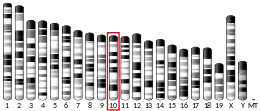| CD164 | |||||||||||||||||||||||||||||||||||||||||||||||||||
|---|---|---|---|---|---|---|---|---|---|---|---|---|---|---|---|---|---|---|---|---|---|---|---|---|---|---|---|---|---|---|---|---|---|---|---|---|---|---|---|---|---|---|---|---|---|---|---|---|---|---|---|
| Identifiers | |||||||||||||||||||||||||||||||||||||||||||||||||||
| Aliases | CD164, MGC-24, MUC-24, endolyn, DFNA66, CD164 molecule, MGC-24v | ||||||||||||||||||||||||||||||||||||||||||||||||||
| External IDs | OMIM: 603356 MGI: 1859568 HomoloGene: 38129 GeneCards: CD164 | ||||||||||||||||||||||||||||||||||||||||||||||||||
| |||||||||||||||||||||||||||||||||||||||||||||||||||
| |||||||||||||||||||||||||||||||||||||||||||||||||||
| |||||||||||||||||||||||||||||||||||||||||||||||||||
| |||||||||||||||||||||||||||||||||||||||||||||||||||
| |||||||||||||||||||||||||||||||||||||||||||||||||||
| Wikidata | |||||||||||||||||||||||||||||||||||||||||||||||||||
| |||||||||||||||||||||||||||||||||||||||||||||||||||
Sialomucin core protein 24 also known as endolyn or CD164 (cluster of differentiation 164) is a protein that in humans is encoded by the CD164 gene.[5][6] CD164 functions as a cell adhesion molecule.
Sialomucins are a heterogeneous group of secreted or membrane-associated mucins that appear to play two key but opposing roles in vivo: first as cytoprotective or antiadhesive agents, and second as adhesion receptors. CD164 is a type I integral transmembrane sialomucin that functions as an adhesion receptor.[5]
References
- 1 2 3 GRCh38: Ensembl release 89: ENSG00000135535 - Ensembl, May 2017
- 1 2 3 GRCm38: Ensembl release 89: ENSMUSG00000019818 - Ensembl, May 2017
- ↑ "Human PubMed Reference:". National Center for Biotechnology Information, U.S. National Library of Medicine.
- ↑ "Mouse PubMed Reference:". National Center for Biotechnology Information, U.S. National Library of Medicine.
- 1 2 Watt SM, Bühring HJ, Rappold I, Chan JY, Lee-Prudhoe J, Jones T, Zannettino AC, Simmons PJ, Doyonnas R, Sheer D, Butler LH (August 1998). "CD164, a novel sialomucin on CD34(+) and erythroid subsets, is located on human chromosome 6q21". Blood. 92 (3): 849–66. doi:10.1182/blood.V92.3.849. PMID 9680353.
- ↑ Zannettino AC, Bühring HJ, Niutta S, Watt SM, Benton MA, Simmons PJ (October 1998). "The sialomucin CD164 (MGC-24v) is an adhesive glycoprotein expressed by human hematopoietic progenitors and bone marrow stromal cells that serves as a potent negative regulator of hematopoiesis". Blood. 92 (8): 2613–28. doi:10.1182/blood.V92.8.2613. PMID 9763543.
Further reading
- Zannettino AC (2001). "CD164". J. Biol. Regul. Homeost. Agents. 15 (4): 394–6. PMID 11862985.
- Masuzawa Y, Miyauchi T, Hamanoue M, et al. (1992). "A novel core protein as well as polymorphic epithelial mucin carry peanut agglutinin binding sites in human gastric carcinoma cells: sequence analysis and examination of gene expression". J. Biochem. 112 (5): 609–15. doi:10.1093/oxfordjournals.jbchem.a123948. PMID 1478919.
- Zhou GQ, Zhang Y, Ferguson DJ, et al. (2006). "The Drosophila ortholog of the endolysosomal membrane protein, endolyn, regulates cell proliferation". J. Cell. Biochem. 99 (5): 1380–96. doi:10.1002/jcb.20965. PMID 16924678. S2CID 6995864.
- Chan JY, Lee-Prudhoe JE, Jorgensen B, et al. (2001). "Relationship between novel isoforms, functionally important domains, and subcellular distribution of CD164/endolyn". J. Biol. Chem. 276 (3): 2139–52. doi:10.1074/jbc.M007965200. PMID 11027692.
- Ganesh SK, Zakai NA, van Rooij FJ, et al. (2009). "Multiple loci influence erythrocyte phenotypes in the CHARGE Consortium". Nat. Genet. 41 (11): 1191–8. doi:10.1038/ng.466. PMC 2778265. PMID 19862010.
- Barbe L, Lundberg E, Oksvold P, et al. (2008). "Toward a confocal subcellular atlas of the human proteome". Mol. Cell. Proteomics. 7 (3): 499–508. doi:10.1074/mcp.M700325-MCP200. PMID 18029348.
- Kurosawa N, Kanemitsu Y, Matsui T, et al. (1999). "Genomic analysis of a murine cell-surface sialomucin, MGC-24/CD164". Eur. J. Biochem. 265 (1): 466–72. doi:10.1046/j.1432-1327.1999.00777.x. PMID 10491205.
- Mungall AJ, Palmer SA, Sims SK, et al. (2003). "The DNA sequence and analysis of human chromosome 6". Nature. 425 (6960): 805–11. Bibcode:2003Natur.425..805M. doi:10.1038/nature02055. PMID 14574404.
- Doyonnas R, Yi-Hsin Chan J, Butler LH, et al. (2000). "CD164 monoclonal antibodies that block hemopoietic progenitor cell adhesion and proliferation interact with the first mucin domain of the CD164 receptor". J. Immunol. 165 (2): 840–51. doi:10.4049/jimmunol.165.2.840. PMID 10878358.
- Gudbjartsson DF, Walters GB, Thorleifsson G, et al. (2008). "Many sequence variants affecting diversity of adult human height". Nat. Genet. 40 (5): 609–15. doi:10.1038/ng.122. PMID 18391951. S2CID 3005450.
- Bonaldo MF, Lennon G, Soares MB (1996). "Normalization and subtraction: two approaches to facilitate gene discovery". Genome Res. 6 (9): 791–806. doi:10.1101/gr.6.9.791. PMID 8889548.
- Oh JH, Yang JO, Hahn Y, et al. (2005). "Transcriptome analysis of human gastric cancer". Mamm. Genome. 16 (12): 942–54. doi:10.1007/s00335-005-0075-2. PMID 16341674. S2CID 69278.
- Havens AM, Jung Y, Sun YX, et al. (2006). "The role of sialomucin CD164 (MGC-24v or endolyn) in prostate cancer metastasis". BMC Cancer. 6: 195. doi:10.1186/1471-2407-6-195. PMC 1557671. PMID 16859559.
- Forde S, Tye BJ, Newey SE, et al. (2007). "Endolyn (CD164) modulates the CXCL12-mediated migration of umbilical cord blood CD133+ cells". Blood. 109 (5): 1825–33. doi:10.1182/blood-2006-05-023028. PMID 17077324. S2CID 14472393.
- Strausberg RL, Feingold EA, Grouse LH, et al. (2002). "Generation and initial analysis of more than 15,000 full-length human and mouse cDNA sequences". Proc. Natl. Acad. Sci. U.S.A. 99 (26): 16899–903. Bibcode:2002PNAS...9916899M. doi:10.1073/pnas.242603899. PMC 139241. PMID 12477932.
- Hennersdorf F, Florian S, Jakob A, et al. (2005). "Identification of CD13, CD107a, and CD164 as novel basophil-activation markers and dissection of two response patterns in time kinetics of IgE-dependent upregulation". Cell Res. 15 (5): 325–35. doi:10.1038/sj.cr.7290301. PMID 15916720.
External links
- CD164+Antigen at the U.S. National Library of Medicine Medical Subject Headings (MeSH)
- Human CD164 genome location and CD164 gene details page in the UCSC Genome Browser.
This article is issued from Wikipedia. The text is licensed under Creative Commons - Attribution - Sharealike. Additional terms may apply for the media files.



